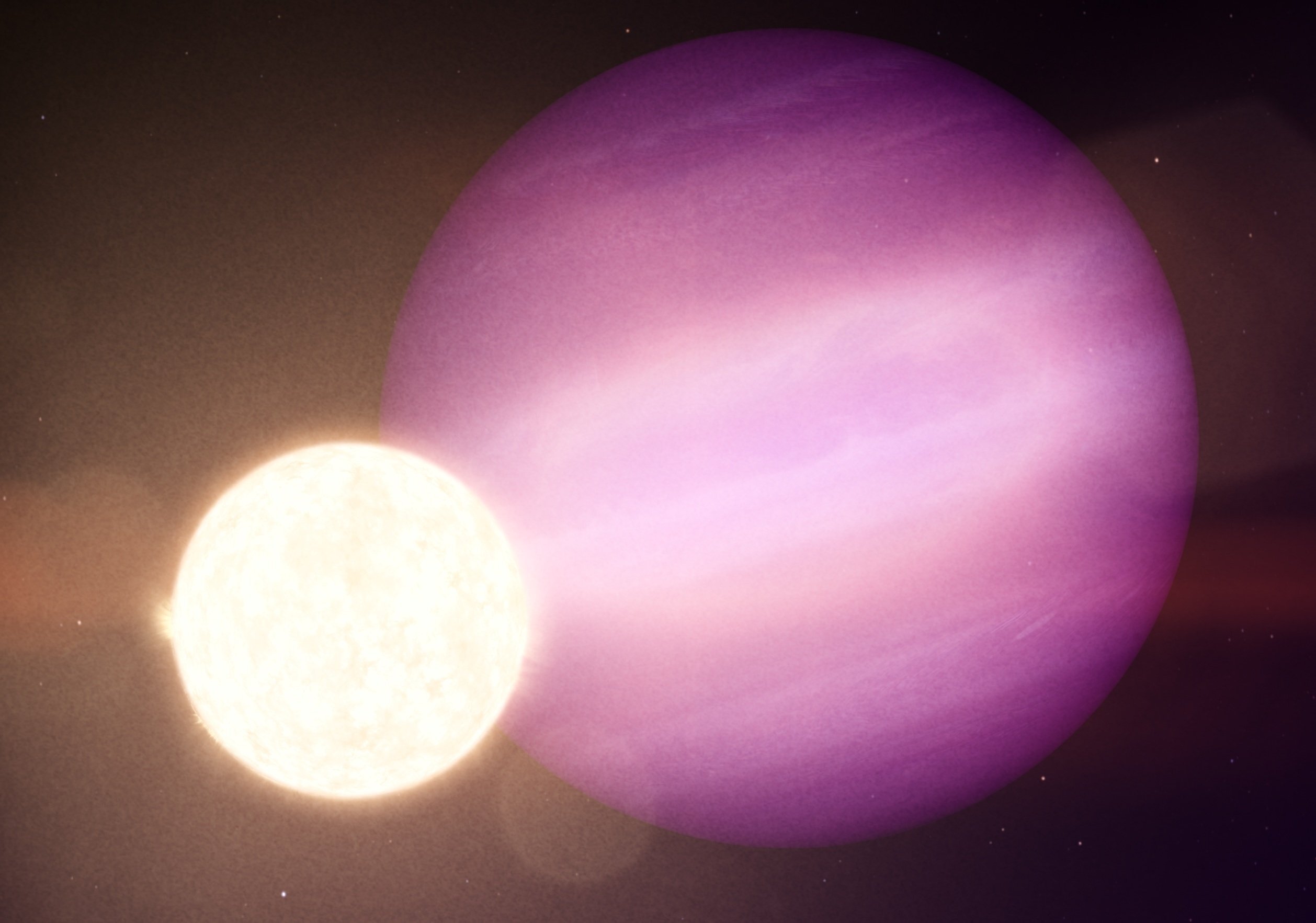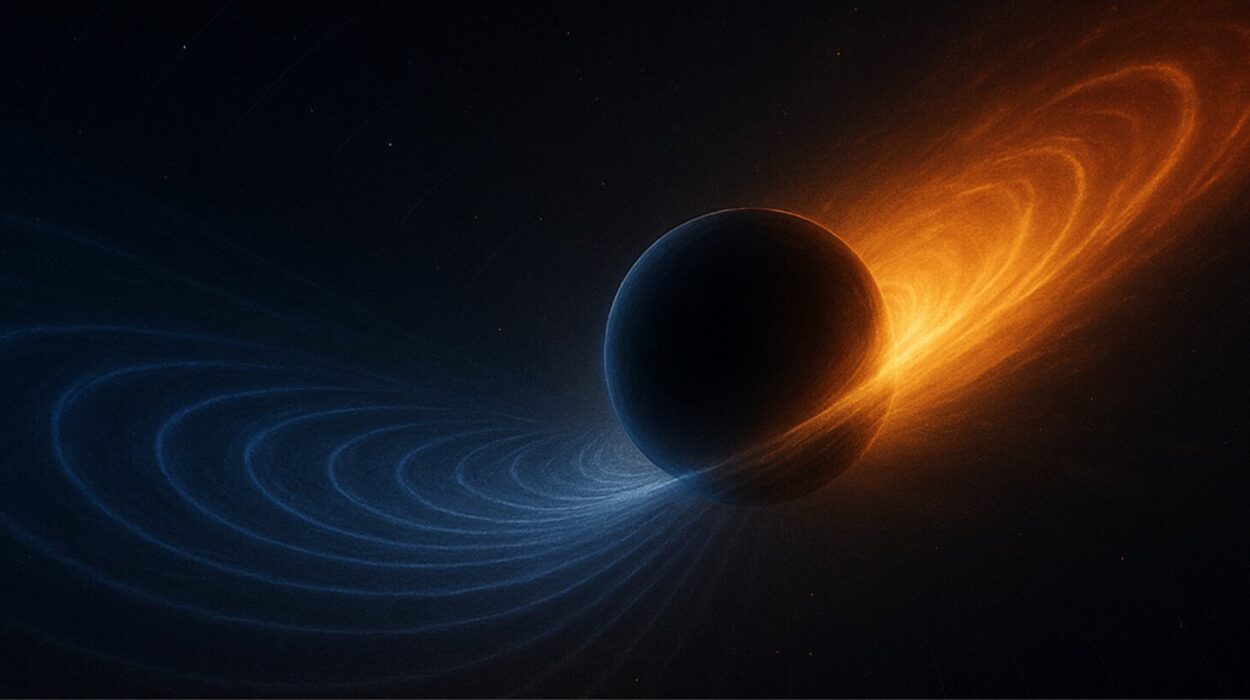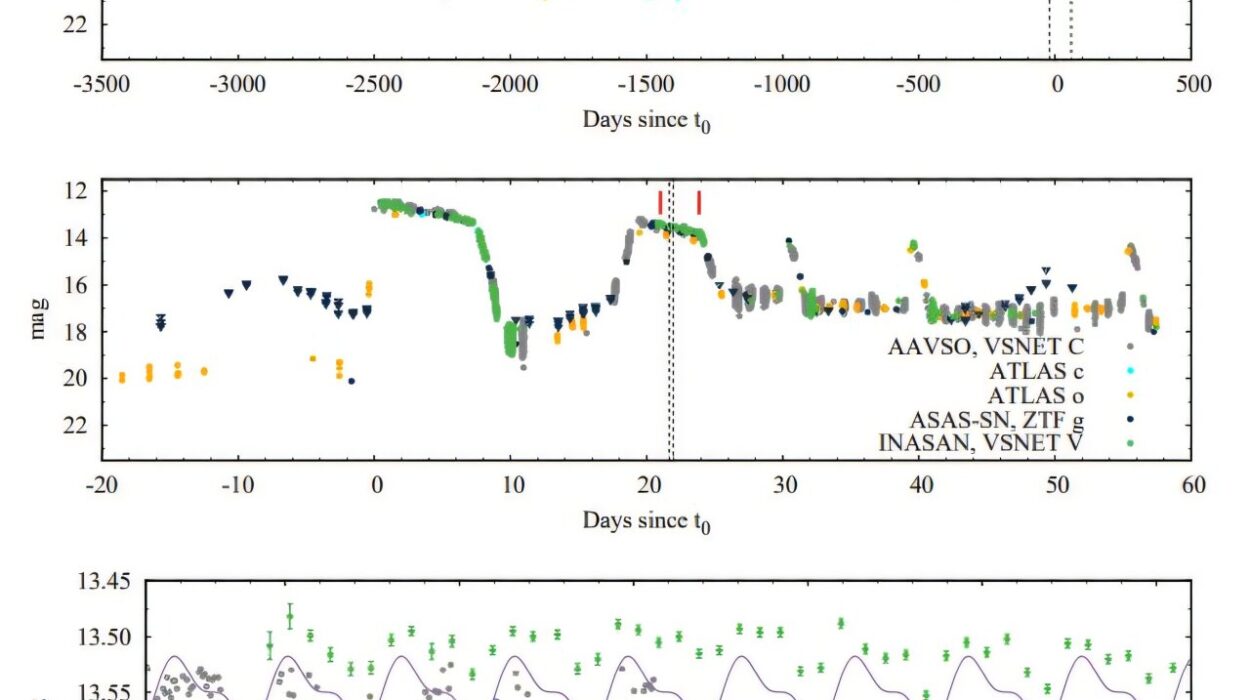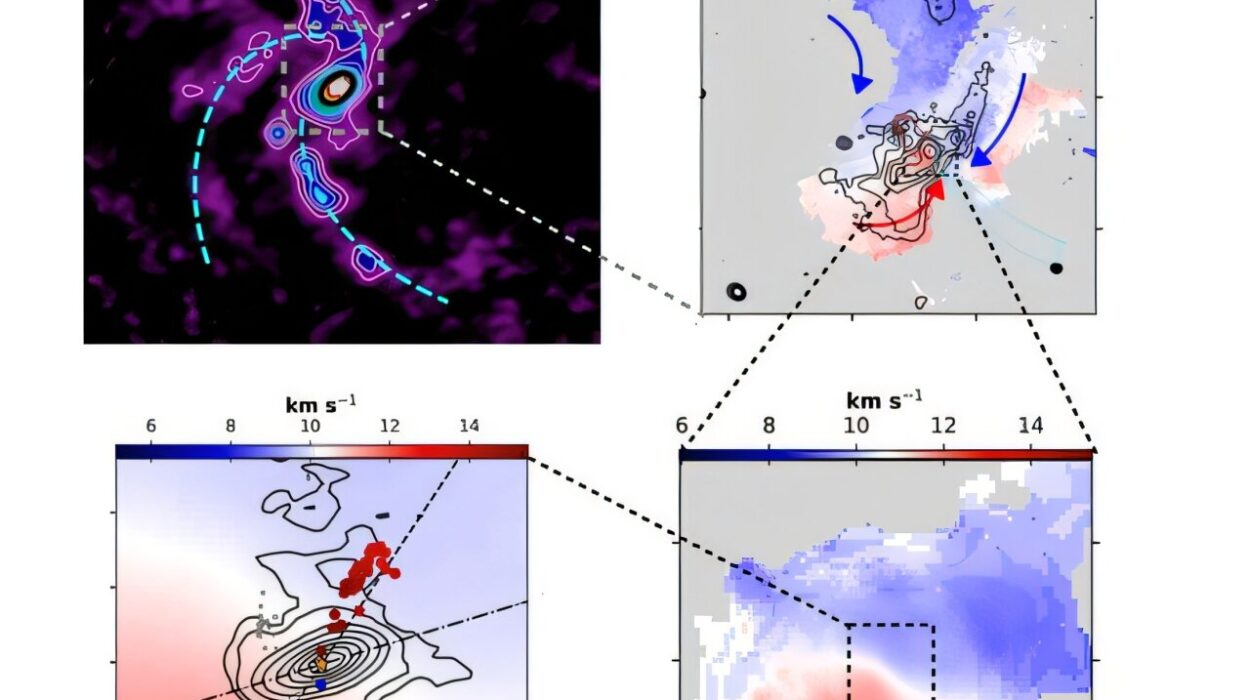In the endless depths of space, some of the most profound mysteries orbit the quietest stars. Among these is a gas giant called WD 1856+534 b, a celestial colossus nearly six times the mass of Jupiter. It drifts silently around a dying ember of a once-vibrant star—a white dwarf—located 81 light-years from Earth. Cold, distant, and cloaked in darkness, this planet seemed beyond the reach of even the most ambitious human instruments—until now.
In 2020, astronomers discovered this strange world, marking the first known instance of a transiting planet orbiting a white dwarf star. At the time, the finding challenged long-held assumptions about the violent fate of planetary systems. But the tale of WD 1856+534 b was just beginning.
In 2024, a team of international astronomers, led by Dr. Mary Anne Limbach of the University of Michigan, peered into the infrared silence of space using NASA’s revolutionary James Webb Space Telescope (JWST). With its Mid-Infrared Instrument (MIRI), Webb revealed something astonishing: WD 1856+534 b is the coldest exoplanet ever directly observed.
But this isn’t just about measuring a temperature—it’s about rewriting what we know about planetary survival, migration, and even the distant possibilities for life around dying stars.
Ghosts of Suns Past: The Peculiar Nature of White Dwarfs
To understand the significance of this discovery, we must first dive into the stellar graveyard.
A white dwarf is the final evolutionary stage for stars like our Sun. After exhausting their nuclear fuel, these stars shed their outer layers in a final blaze of planetary nebula glory, leaving behind a dense, Earth-sized core that no longer shines with the fire of fusion but glows faintly from residual heat. These are stellar corpses, slowly cooling over billions of years.
Around such remnants, planetary systems are expected to suffer catastrophic disruption. During a star’s red giant phase, it expands enormously, often swallowing any planets in its inner orbit. The survival of a gas giant like WD 1856+534 b in such a system is thus an astronomical enigma. How did this planet come so close to a star that should have destroyed it?
And what secrets does it hold?
Webb’s Watchful Eye: A Cold Giant in the Infrared
Answering these questions required the most advanced telescope ever built: the James Webb Space Telescope. Unlike the Hubble Space Telescope, which observes mainly in visible and ultraviolet light, Webb specializes in infrared astronomy, allowing it to peer through cosmic dust and detect the faint glow of distant, cold objects.
Dr. Limbach’s team targeted WD 1856+534 b with MIRI, the Mid-Infrared Instrument, as part of JWST’s Cycle 3 General Observation (GO) program. Their goal was ambitious: to directly detect the planet’s light and characterize its temperature and atmospheric properties—a process known as direct imaging.
Unlike the more common transit or radial velocity methods, which infer planets by their effect on host stars, direct imaging attempts the almost impossible: capturing the planet’s light amidst the blinding glare of its star. Usually, this technique is only viable for young, hot gas giants orbiting far from their stars.
But white dwarfs present a unique opportunity.
Due to their tiny size and faint luminosity, WDs don’t outshine their planets by orders of magnitude, unlike main-sequence stars. This reduced contrast means that even relatively dim objects—like a cold gas giant—can be detected against the stellar background. In the case of WD 1856+534 b, it was like photographing a firefly near a dying candle instead of next to a spotlight.
The Coldest One Yet: A Planet Beyond Frost
The data, collected and analyzed by an international team including researchers from MIT, Johns Hopkins, the University of Victoria, and more, told a remarkable story.
Using infrared excess detection—a method that identifies additional IR light beyond what the star alone emits—the team confirmed the presence of WD 1856+534 b. They then measured its atmospheric temperature, revealing a frigid average of just 186 Kelvin (−87°C or −125°F).
This temperature shattered previous records. No other exoplanet with such a low thermal profile had ever been directly observed. Prior detections using emission spectroscopy were limited to much hotter worlds, often exceeding 275 Kelvin (1.85°C)—a barrier WD 1856+534 b now boldly defies.
The new findings also updated the estimated mass of the planet. Earlier observations had pegged it at a potentially star-like 13.8 times the mass of Jupiter, blurring the line between planet and brown dwarf. But the JWST data significantly reduced that estimate. The cold giant is no more than six Jupiter masses, placing it squarely in planetary territory.
Survivor of a Stellar Apocalypse
How, then, does a massive gas giant survive the wrath of its dying star?
That mystery lies at the heart of why astronomers are so captivated by this frozen world. During the red giant phase of a Sun-like star, planets orbiting within a few astronomical units are typically vaporized or engulfed. Yet WD 1856+534 b orbits just 0.02 AU—less than one-tenth the distance of Mercury from the Sun.
The only plausible explanation is that this planet didn’t start there.
It must have formed farther out and migrated inward only after the star collapsed into a white dwarf. Such inward migration may occur due to gravitational interactions with other massive bodies—possibly undetected companions—or through chaotic orbital dynamics triggered by the loss of stellar mass.
This inward journey, perilous and rare, would mean that planetary systems can remain active and dynamic long after their stars have died. It also hints that white dwarf systems could host planets in stable, temperate zones—regions where temperatures might someday allow for liquid water or even the most basic forms of life.
A New Frontier for Biosignature Hunting
The implications of this discovery stretch far beyond one lonely gas giant. As JWST’s mission continues, astronomers hope to study many more white dwarf planetary systems to answer a haunting question: can life survive the death of a star?
Detecting biosignatures—chemical fingerprints of life—on exoplanets has been a long-sought dream. But doing so requires studying the light from a planet’s atmosphere in detail. This is precisely what JWST was designed to do. By observing the absorption and emission of specific wavelengths, scientists can detect gases like oxygen, methane, carbon dioxide, and water vapor—indicators that, in the right combinations, may suggest biological processes.
However, until now, all such efforts have focused on planets around bright, main-sequence stars. These stars, like our Sun, create massive light interference that makes isolating planetary spectra extremely difficult.
But white dwarfs, with their dim glow, may provide the best contrast conditions for such work. If Earth-like planets orbit within the habitable zone of a white dwarf, and if JWST or future instruments can study their atmospheres, we may be on the brink of detecting life—not just anywhere, but in the afterlife of a star.
The Road Ahead: More Webb Observations to Come
Dr. Limbach and her colleagues aren’t done. Further JWST observations are scheduled for 2025, which could refine our understanding of WD 1856+534 b’s atmosphere, possibly revealing complex chemical processes or additional planets in the system.
They are also awaiting results from Cycle 1 observations using JWST’s Near-Infrared Spectrometer (NIRSpec). This instrument can offer deeper insight into the planet’s atmospheric composition and potentially confirm the presence—or absence—of reflective cloud layers or trace gases.
Meanwhile, the scientific community continues to explore the broader implications of planetary systems around white dwarfs. Could rocky, Earth-like planets be lurking closer to these stellar remnants? Could they hold water or even microbial life, huddled against the fading warmth of a dead star?
An Icy Beacon in the Dark
The discovery of WD 1856+534 b and its frigid temperature isn’t just a record-breaking moment in planetary science—it’s a symbol of cosmic resilience. This giant planet, drifting in tight orbit around a star long past its prime, tells a story of survival, migration, and celestial evolution.
In the grand theater of the cosmos, where stars live and die in fiery spectacle, planets like WD 1856+534 b remind us that the universe is never static. Even in death, stars can host dynamic worlds, and even in the coldest corners of space, planets may whisper secrets about the nature of existence.
With instruments like JWST now peering deeper into the night, those whispers are growing louder. In the decades to come, we may look back on this discovery as one of the early chapters in a far greater story—a story that may one day tell us not just what exists beyond our solar system, but who.
Reference: Mary Anne Limbach et al, Thermal Emission and Confirmation of the Frigid White Dwarf Exoplanet WD 1856+534b, arXiv (2025). DOI: 10.48550/arxiv.2504.16982






